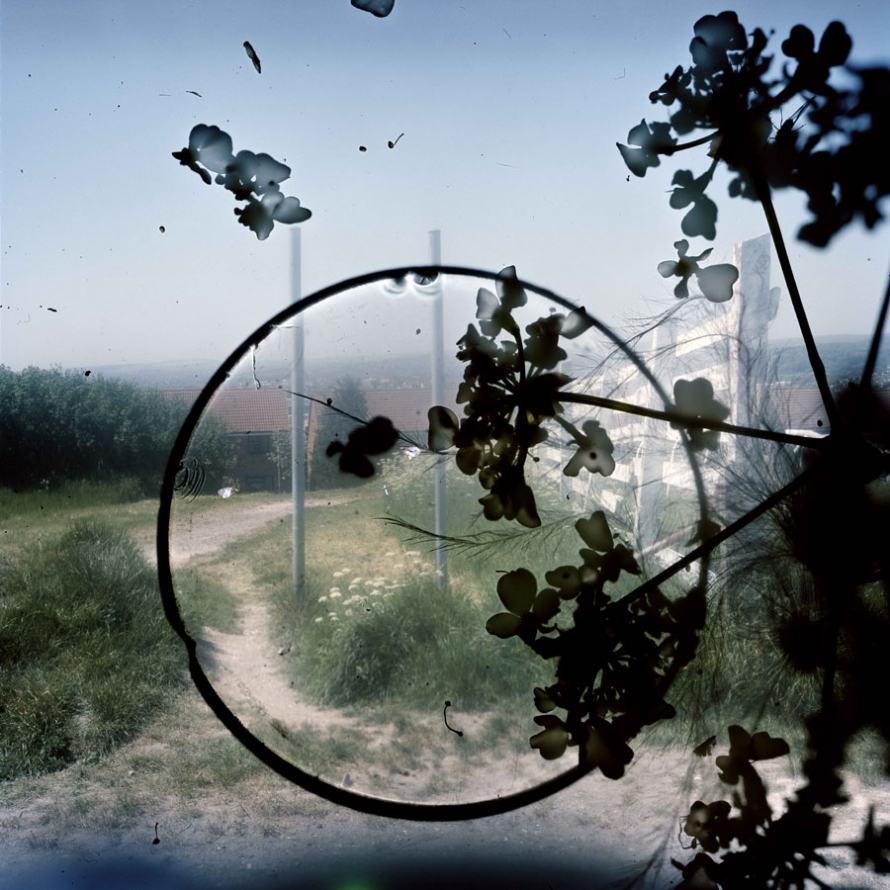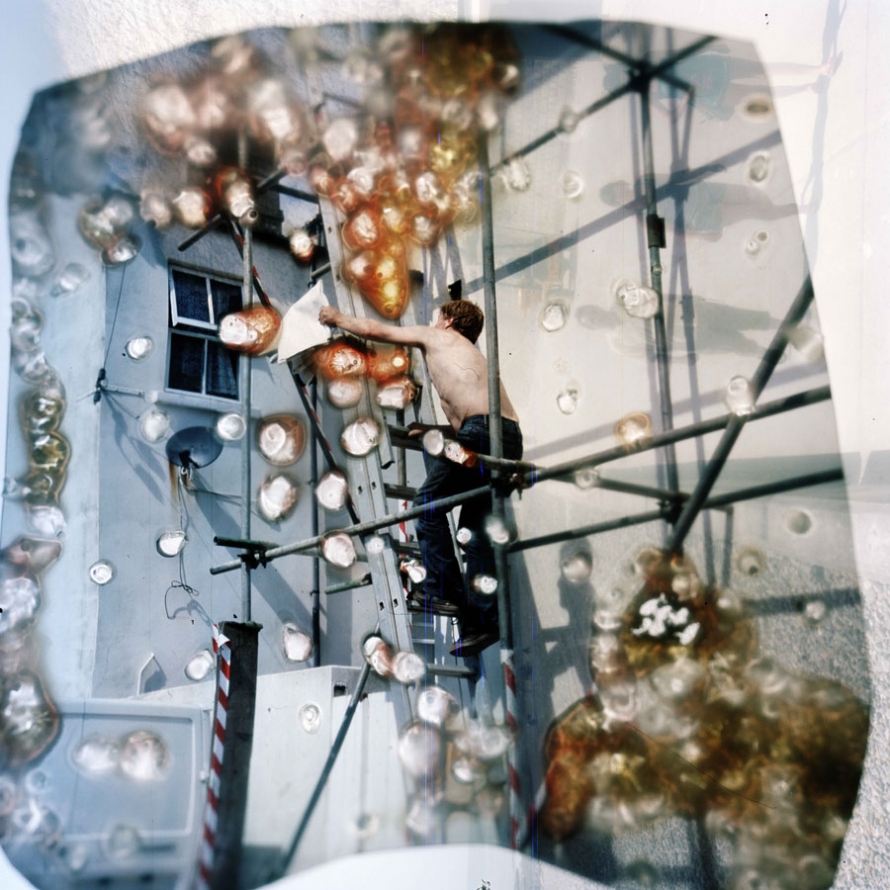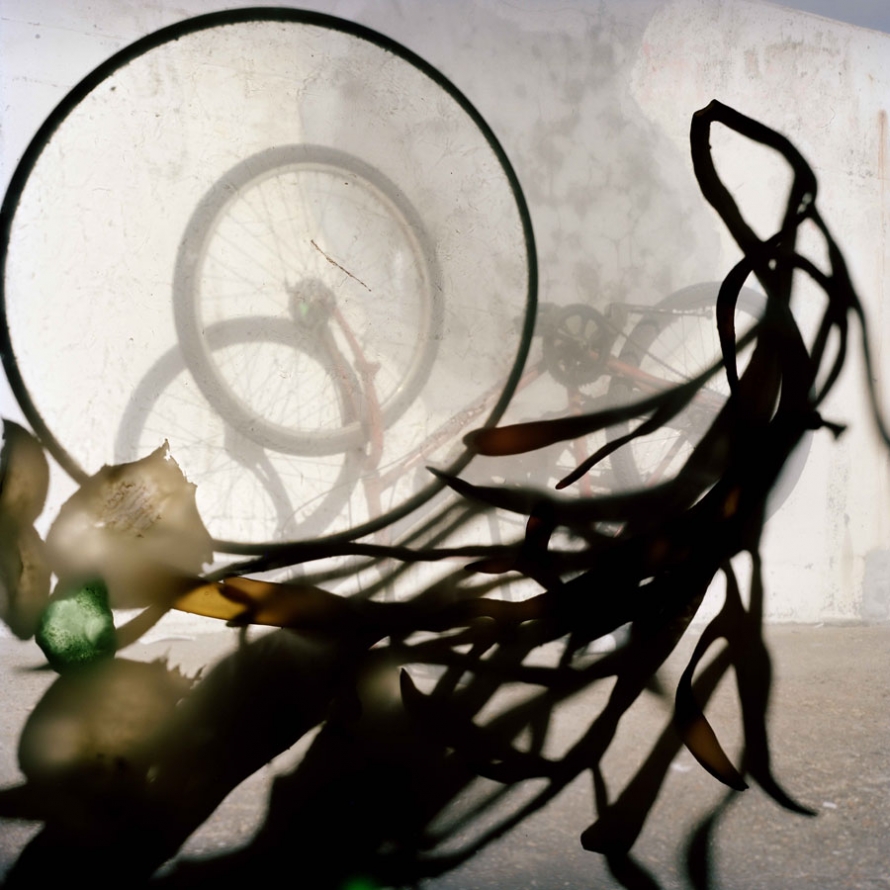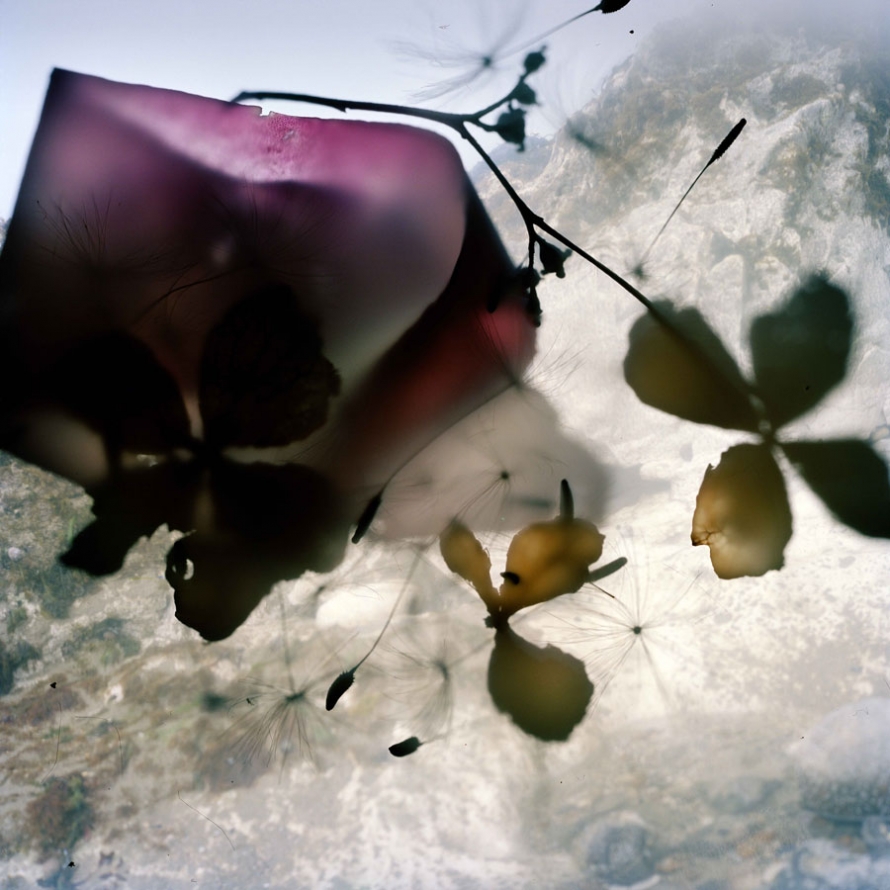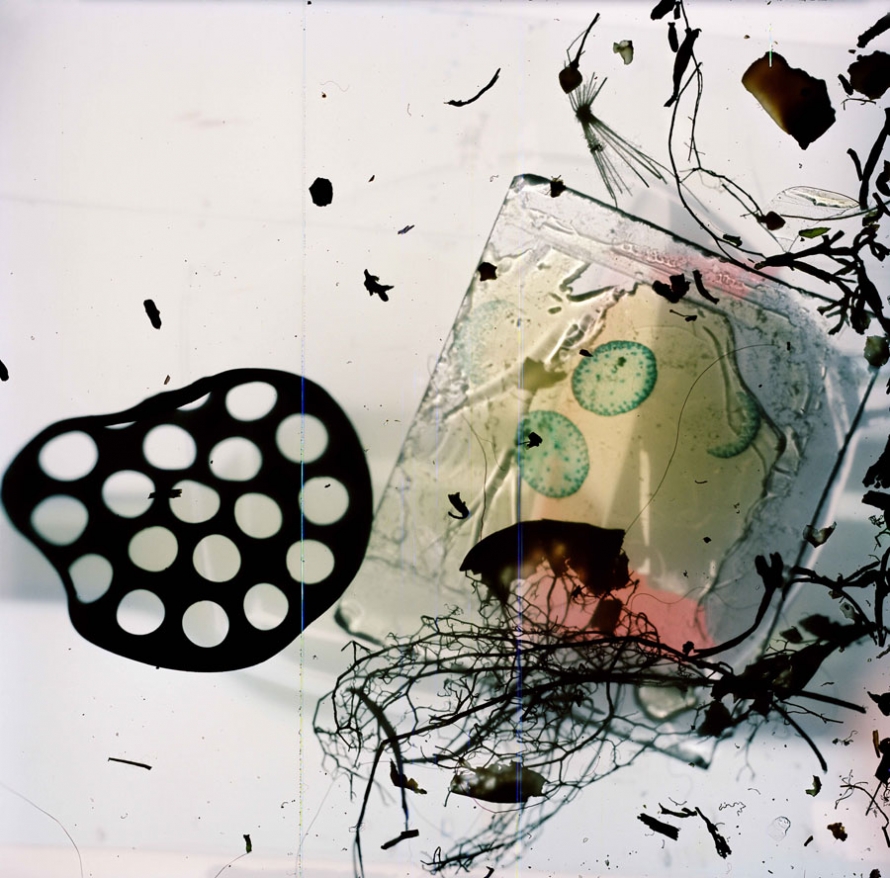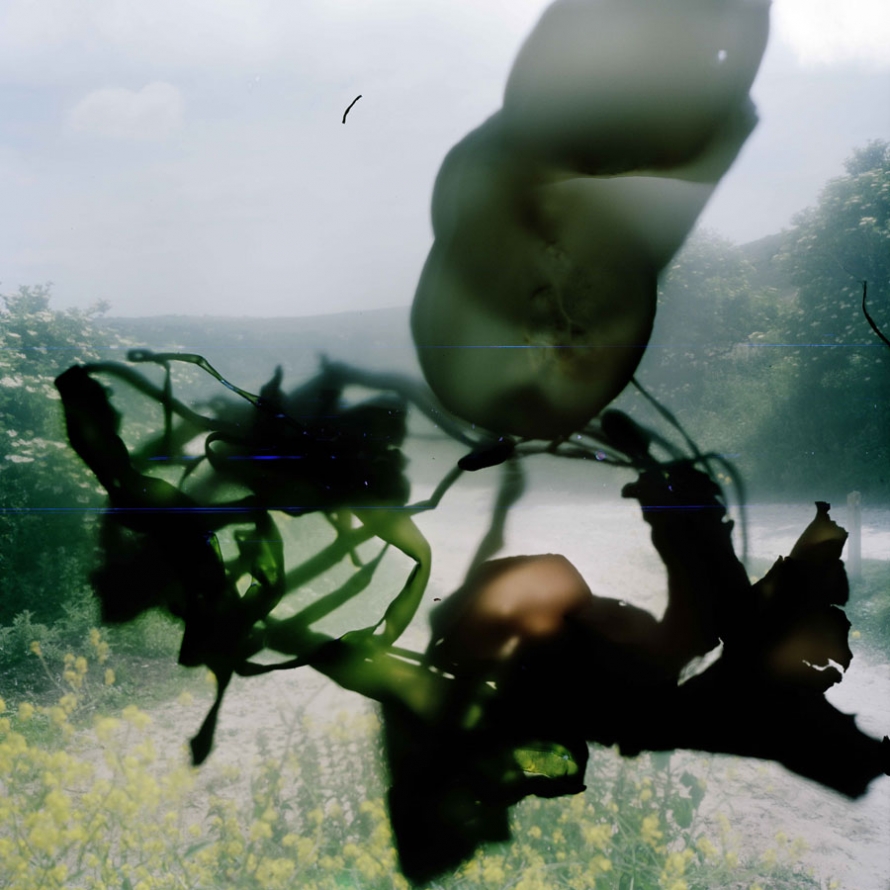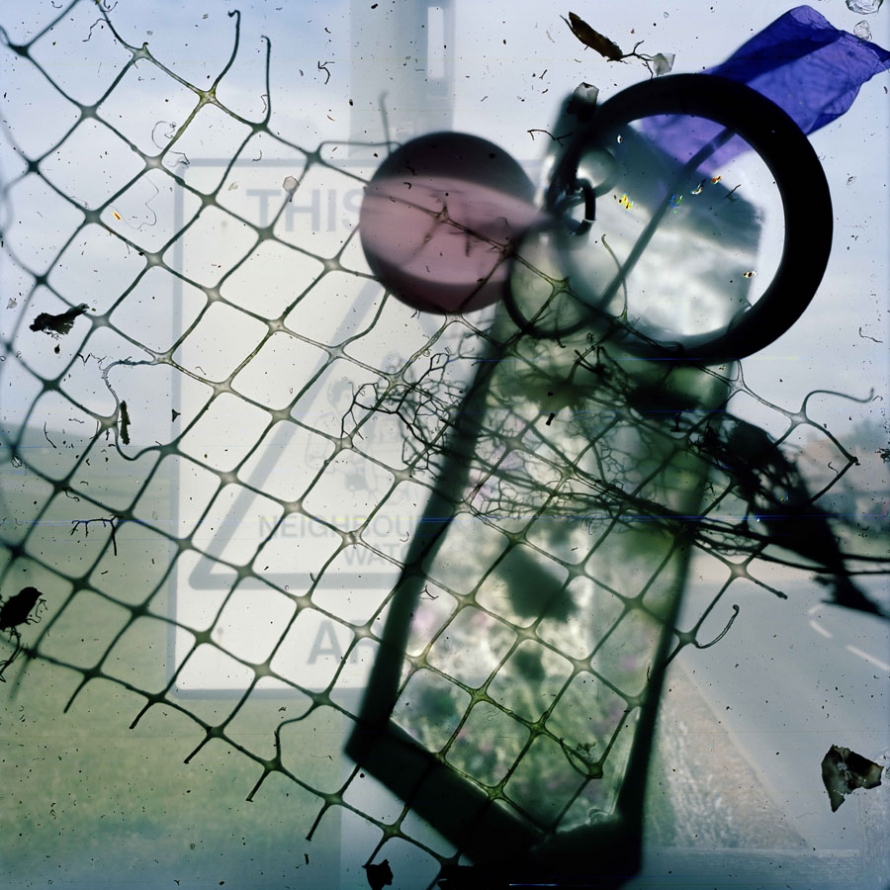Everyday scenes from life in Brighton, England are suffused with an eerie magic by the shapes created by flowers and small insects placed by photographer Stephen Gill into his camera for his series, “Outside In.” Gill describes his work as where “intentions collide with chance”—his photos are neither posed nor manipulated in post-processing, and the result is a new way of observing possibilities hidden in our day-to-day lives.
Stephen Gill lives in East London, an area that has provided the inspiration for many of his photographic works and studies. His photographs are held in various collections worldwide and have been exhibited at international galleries, museums and festivals including the National Portrait Gallery, the Victoria and Albert Museum, Victoria Miro Gallery, Galerie Zur Stockeregg, GunGallery, Palais des Beaux Arts, the Moscow State Centre of Architecture, Leighton House Museum, Haus Der Kunst, GP Gallery, Rencontres d’Arles, and the Toronto Photography Festival. A number of Stephen’s photographic projects have been published as books, including B Sides, A Book of Birds, Coming up for Air, 44 photographs: Trinidad, and The Hackney Rag.
“Outside In” will be on display at GUN Gallery in Stockholm from March 17-April 20, 2011. All images courtesy and copyright © the artist, all rights reserved.
How did you pick “Outside In,” the name of the exhibition?
This has been floating around in my mind for years, really more as a way of working than a series title. It is fairly literal, as a key part of the finished images is the result of introducing the outside world into the body of my camera. I have been thinking of this process as using a camera as a vacuum cleaner rather than a descriptive recording device—trying the suck up the essence of a place.
Where are these photos taken?
The “Outside In” images were made in Brighton in 2010, and this body of work is a kind of side step for me as I have been putting things in my camera since 2007 in East London where I live, although this series is not finished. The process usually involves lots of walking, cycling, looking at the ground, or crawling around looking at tiny details and collecting small objects. The image making process does involve many non-picture taking stages, like pressing flowers, catching fish and crabs, collecting insects, and so on, that will be invited into the camera.
How do you achieve the overlay effect? Are the photos manipulated with a computer at all?
I place the objects, plant life, and small creatures inside the camera then load a color negative film. I have made a mirror device so the camera film plane is horizontal, allowing the objects to sit on the film emulsion as the shutter opens and closes like in camera photo-grams. These are straight photographs and neither made nor manipulated with a computer.
How did you first decide to add the effect to your photos?
I don’t really see it as an effect but simply as image content. I have always been trying to find ways of stepping back and allowing the subject to clamber aboard the images and steer the work, hoping the spirit of a place can remain even with little or no descriptive information. I have been attempting this for around 10 years now in different ways, like my “Buried” series or “Hackney Flowers.” In the case of the “Outside In” series it was the idea of sucking off such tiny details, and since I did not own a macro lens it ended up being the final push to put the subjects in the camera.
To what extent does chance influence the way your work turns out?
Chance is a key factor in this way of working. I am aware of what I have placed inside the camera, and of course of what I am photographing, but in many ways I am steering the image but have no idea where the final image will land, as this all depends on where the objects sit on the film emulsion. This way of working is very exciting, specially as photography can be so much about control, so thinking of the point where intentions collide with chance is very appealing to me. It’s a funny one, as when things are introduced into the camera body you are also obscuring as well as adding, so often the image forming in your head has done a complete U-turn and lands in another interesting place.
Is the viewer glimpsing into the world of the photo, or are the photos looking back at us through the haze?
This images are kind of pulling in different directions with the absolute clarity of the objects that are laying directly on the film coupled with often a more muted, less clear strained view. The subject matter is on both sides of the lens, though taken at the same time.
Do you consider this documentary photography or abstract photography?
I still see this as documentary photography, but looking into rather than onto as the results incorporate highly detailed macro recordings.
What are you working on now?
These days, I am feeling a bit lost—well I was last week and my head is spinning a bit from a few very intense years of making work. I am still making work in East London, but I am trying to teach myself to slow down and make less work.
